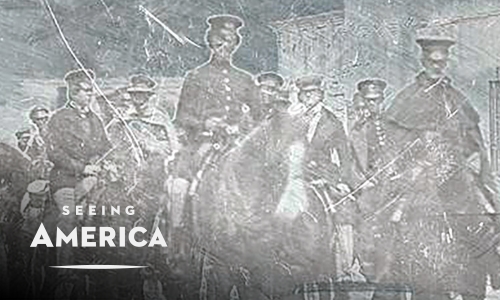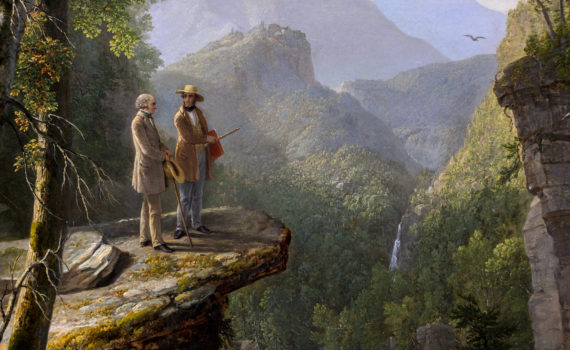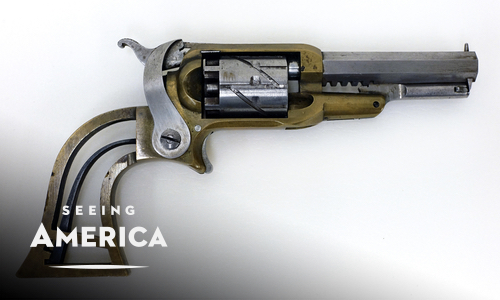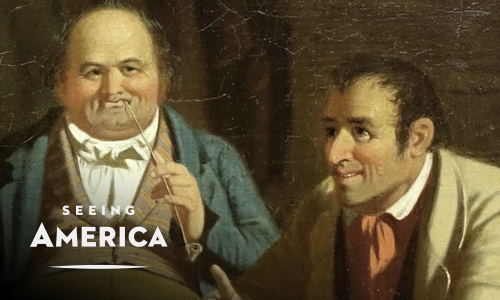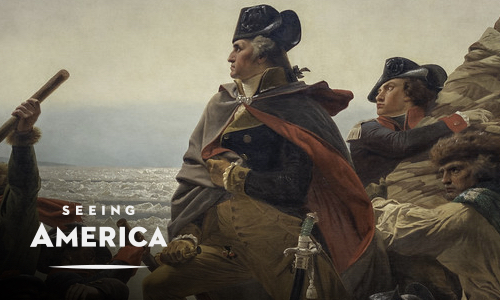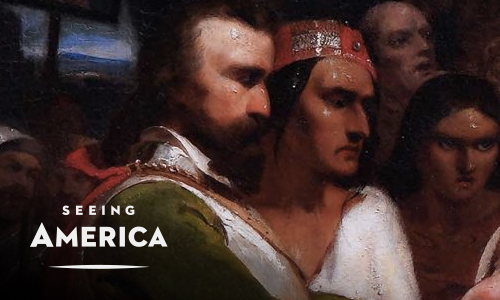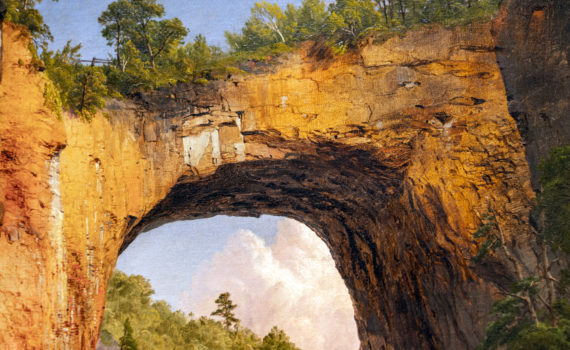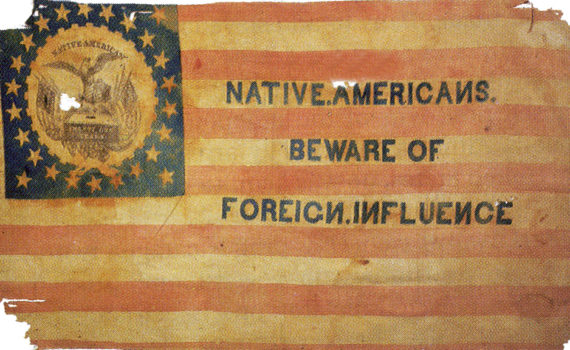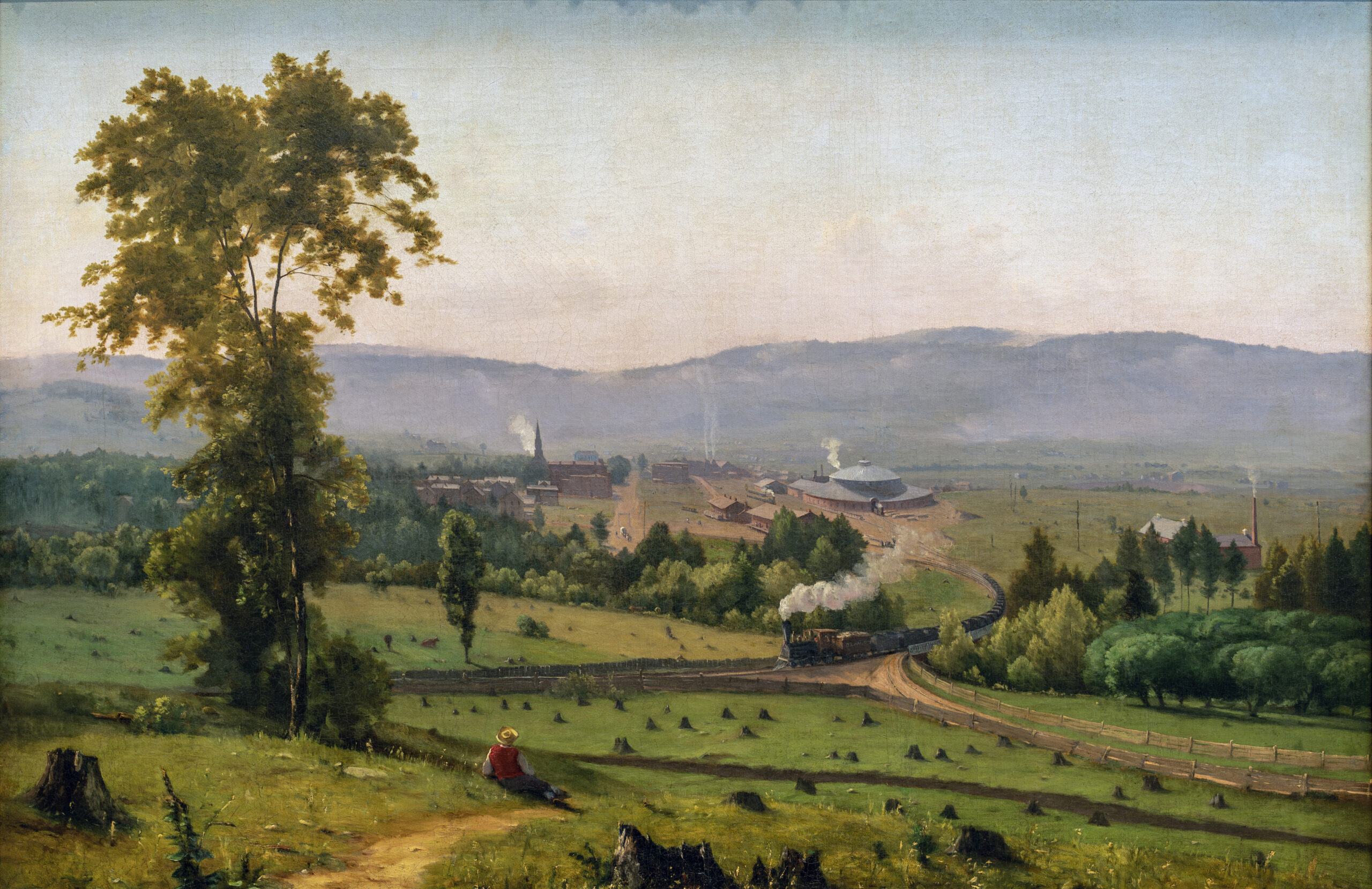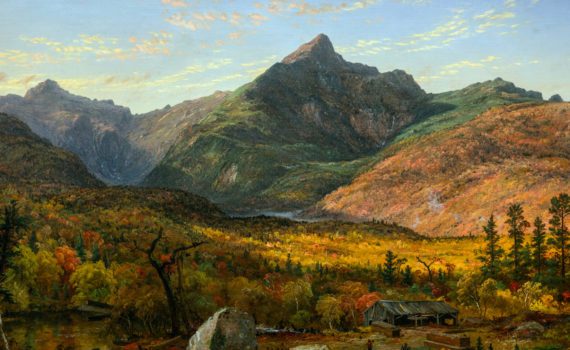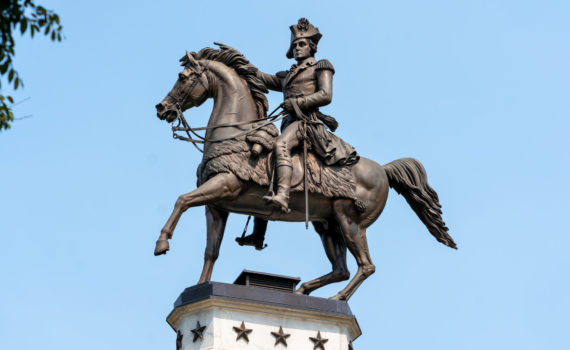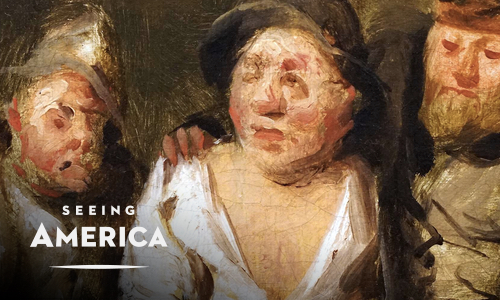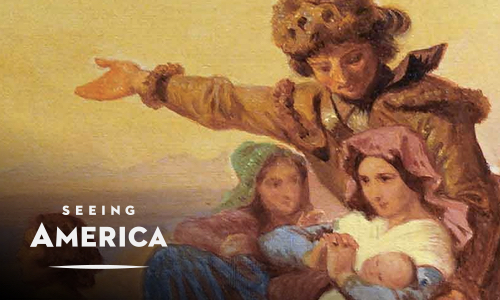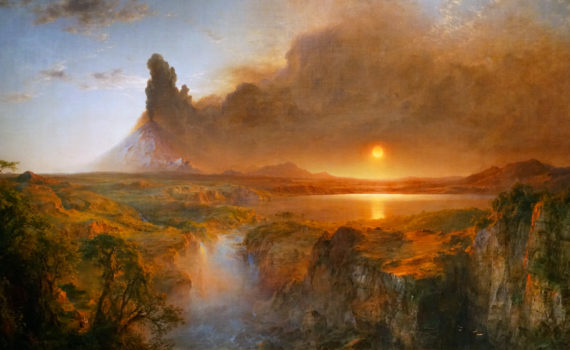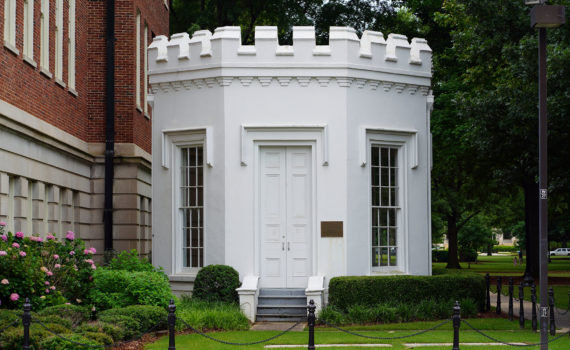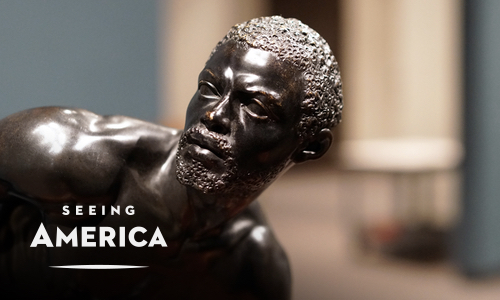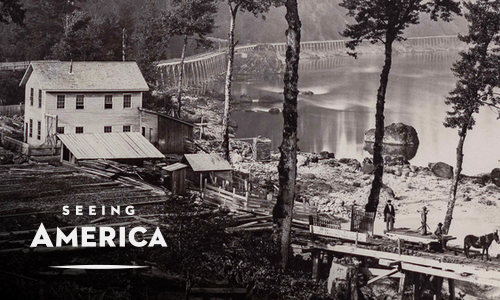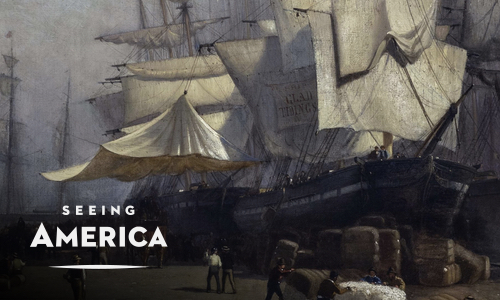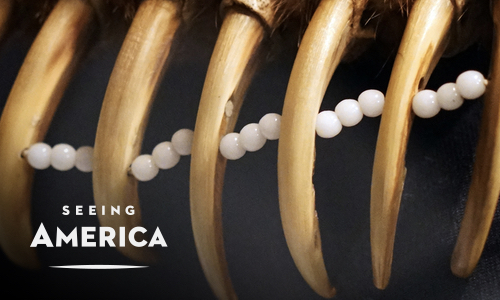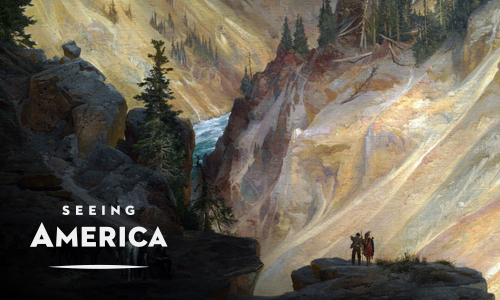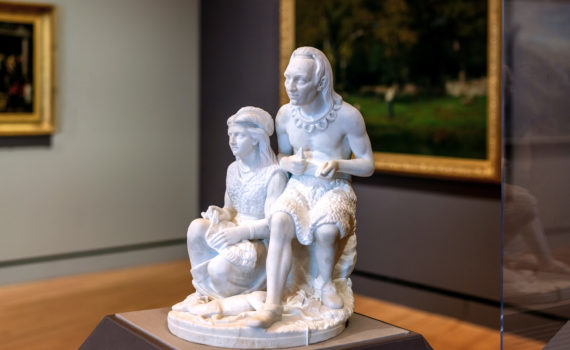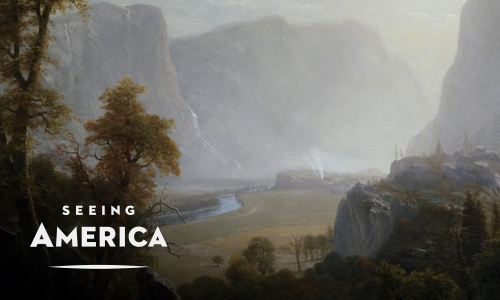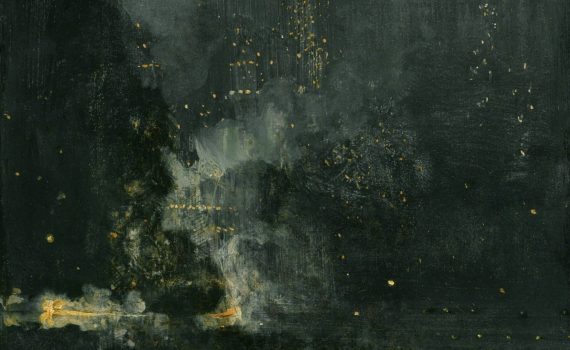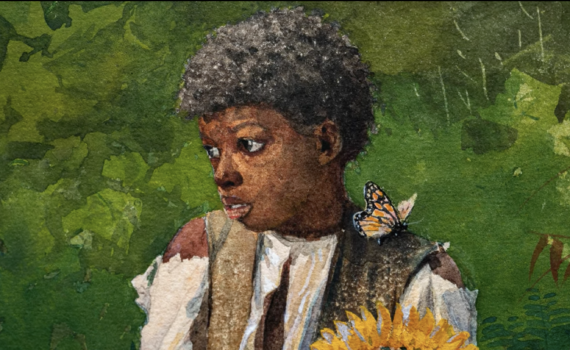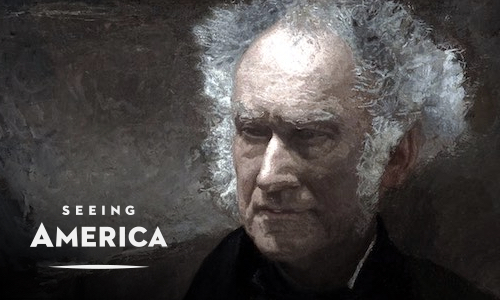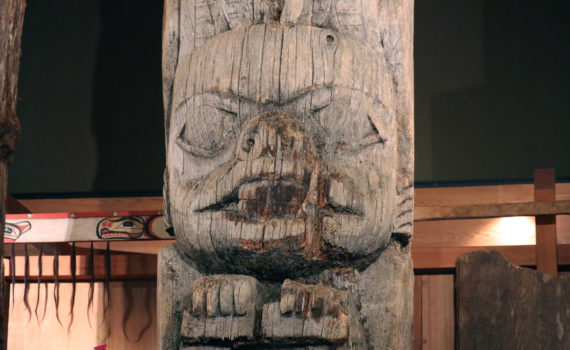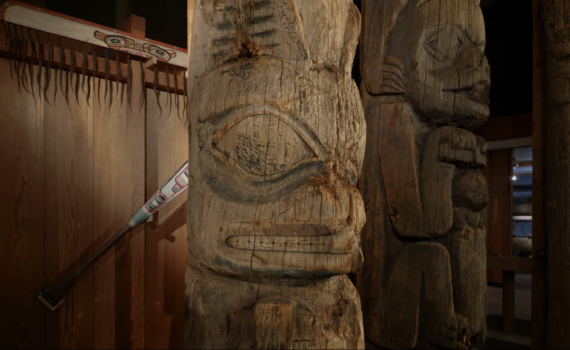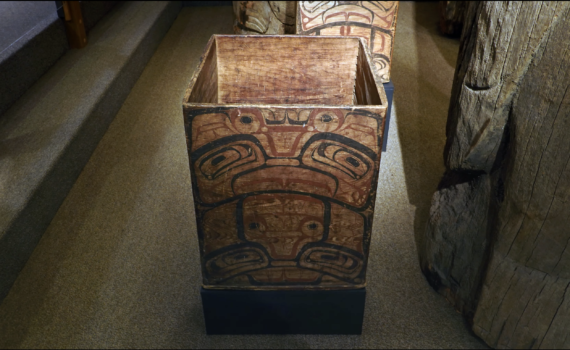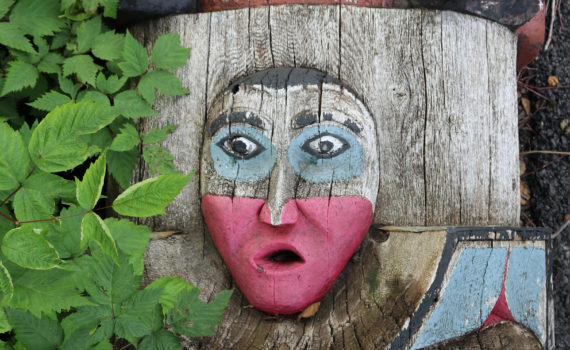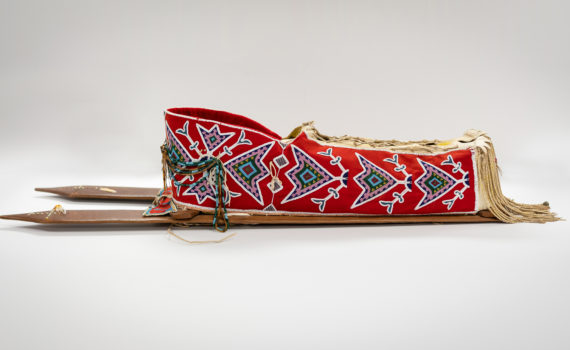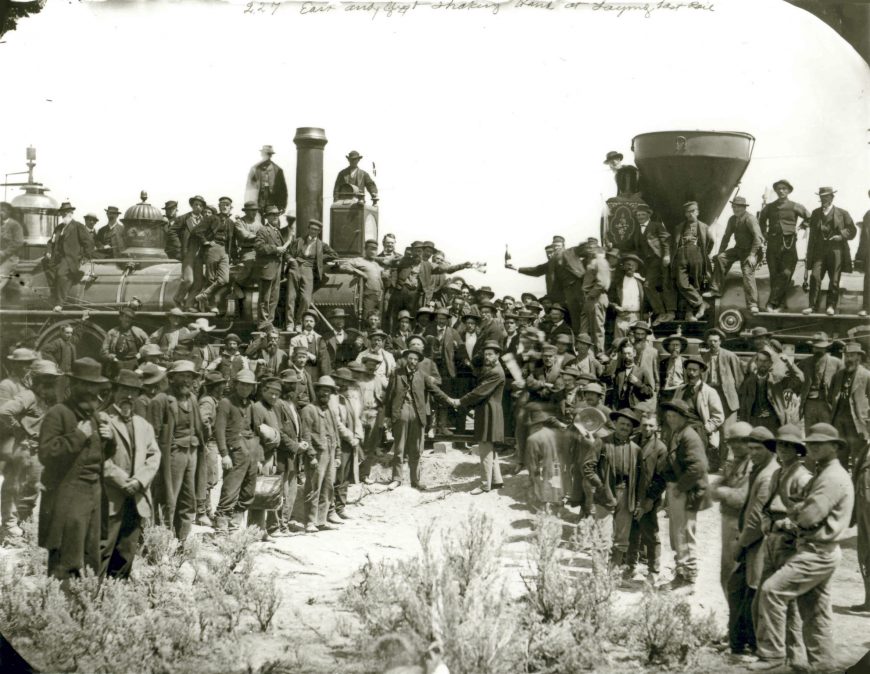Westward the Course of Empire
Essay by Dr. Kelly Enright
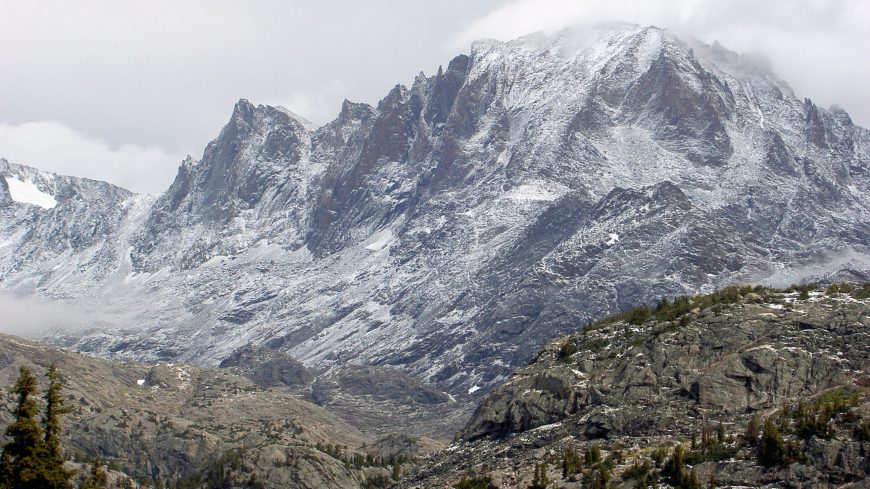
Summer snow covering Fremont Peak, Wind River Range, Wyoming (photo: summitburger, CC BY-SA 2.0)
After ascending a peak on June 13, 1844, explorer John C. Fremont wrote: “With joy and exultation we saw ourselves once more on the top of the Rocky Mountains and beheld a little stream taking its course towards the rising sun.” Fremont led a federally-commissioned expedition surveying the western landscape to locate routes for emigrants traveling westward to the Pacific. The narrative of his travels, penned along with his wife, Jessie Benton Fremont, became a best-seller and his map guided the flood of wagons soon to hit the Oregon Trail.
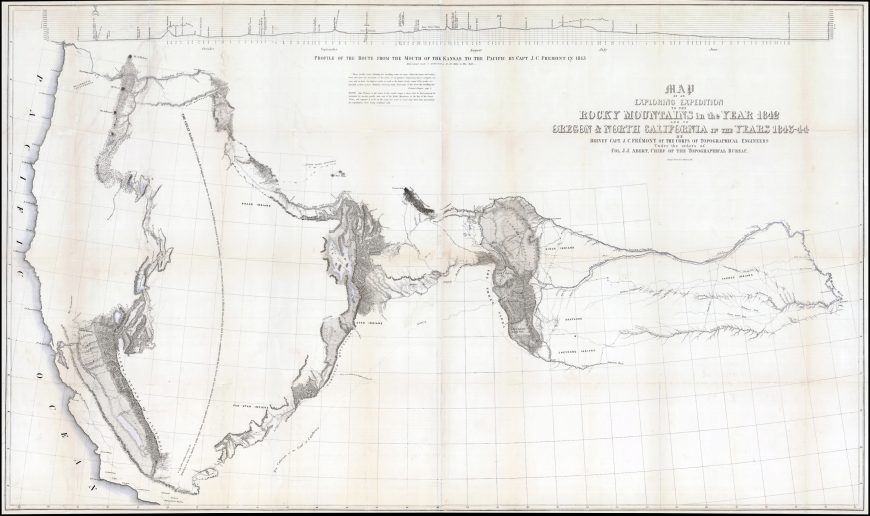
John C. Fremont, Map of an Expedition to the Rocky Mountains in the Year 1842 and to Oregon and North California in the Years 1843-44
Fremont’s report offered both information and inspiration for a growing population. As the nation added land west of the Mississippi River, published maps, and built infrastructure, citizens flocked towards new possibilities. These settlers caused conflict as they did so. American Indians already living on the landscape fought back. Mexico sought to protect its borders from further encroachment by the United States. Meanwhile, Northern and Southern Americans debated the spread of enslaved labor into new territories.
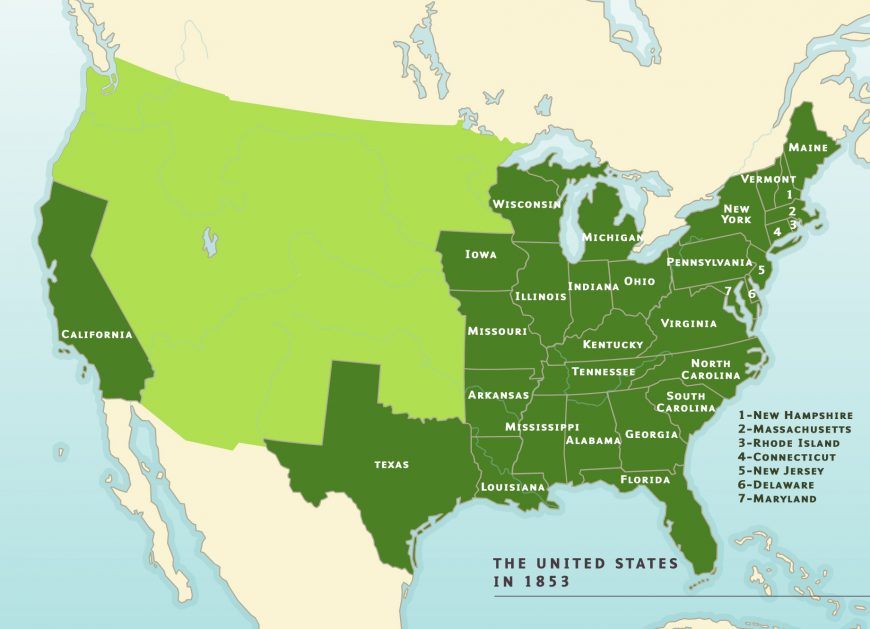
The United States in 1853. Map courtesy of The Map as History. For a complete catalogue with over 200 videos, please visit The Map as History website (© The Map as History, CC BY-NC-SA 4.0)
Industrialization & Reform
While industrialization began earlier, the pace quickened during the middle decades. Steam power began to replace water power and factories streamlined labor through the use of interchangeable parts, making goods easier and less expensive to produce. Isaac Singer used this system (sometimes referred to as the “American System”) to mass produce sewing machines, which led to the increasing availability of store-bought clothing. Similarly, Samuel Colt employed an assembly line for the first time, training laborers in a single task in order to speed the manufacture of his pistols.

Elisha King Root for Samuel Colt, Experimental Pocket Pistol, Serial number 5, caliber .265 inches, barrel length 3 inches, overall length 7 inches, brass, steel, and iron, 1849–50 (Wadsworth Atheneum Museum of Art, Hartford, Bequest of Elizabeth Hart Jarvis Colt)
Immigrant labor fueled much of the industry driving the nation. In the 1850s, 2.6 million people came to the U.S. for opportunity or relief from revolution, inequality, and poverty. Along with the Irish and Chinese, Germans, Scandinavians, and Italians crossed oceans to find employment in agriculture or industry. Some Americans resented this influx of immigrants—the largest wave by population percentage—forming the Know-Nothing Party which sought to suppress immigrant votes, sometimes through violence.
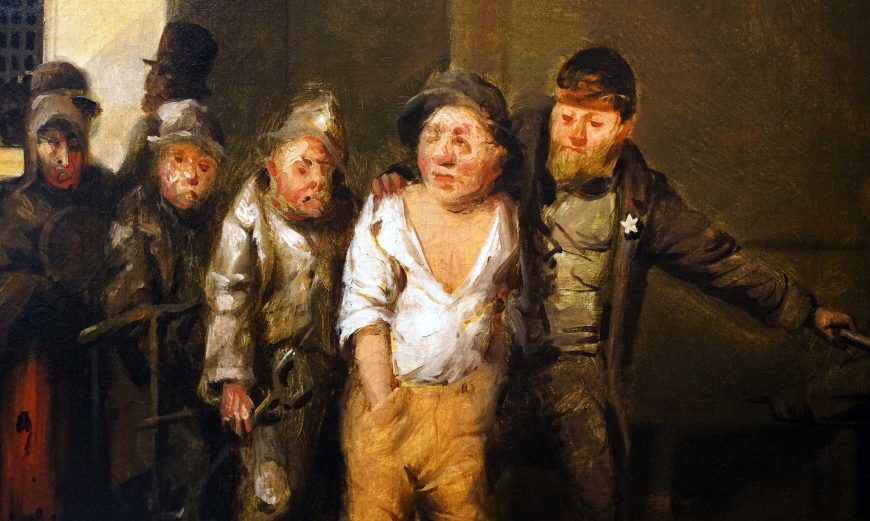
David Gilmour Blythe, Justice (detail), c. 1860, oil on canvas, 51.1 x 61.3 cm (Fine Art Museums of San Francisco)
Industrialization and increasingly dense urban centers created labor strife, deteriorating relations between economic classes, health crises, and environmental degradation. Some began to question the very idea of progress, while others sought to alleviate the ills society now faced. Transcendentalist Henry David Thoreau left the city to “live deliberately” at Walden Pond, about 20 miles from Boston, seeking a closer connection to self through nature. Frederick Law Olmsted designed New York City’s Central Park as a pastoral retreat for city dwellers. Reformers advocated for the improvement of many aspects of society. Women gathered at Seneca Falls, New York penned a Declaration of Sentiments restating the famous first words of the Declaration of Independence to be inclusive: “All men and women are created equal.” Abolitionists lectured and published on the horrors of slavery, including narratives by former slaves, Frederick Douglass and Harriet Jacobs. Others, like John Brown took a more radical approach, using violence in an effort to free the enslaved.
In 1850, nine thousand miles of railroad track lie scattered across the eastern states. Track tripled in a decade and the growth of western markets demonstrated the need for a Transcontinental Railroad linking the coasts. The laborers who built this track were primarily recent immigrants. In addition to Civil War veterans, Irish crews began in the East and worked westward; Chinese laborers moved in the opposite direction. Both were groups that experienced discrimination in the United States, and the Chinese in particular did not earn recognition for the arguably more grueling work of blasting through the Sierra Mountains (they were even excluded from photographs celebrating the rail’s completion in 1869). Nevertheless, the nation celebrated the railroad as the pinnacle of American achievement and a symbol of national unity.
Westward Expansion
Before a railroad connected the coasts, Americans pushed the nation’s frontier further into lands inhabited by American Indians and claimed by other nations. Through both war and treaties, the U.S. claimed its current continental boundaries by mid-century. Multiple gold rushes and other mining opportunities, farmland, and enterprise enticed waves new immigrants and migrants creating a diverse mixture of peoples and cultures.
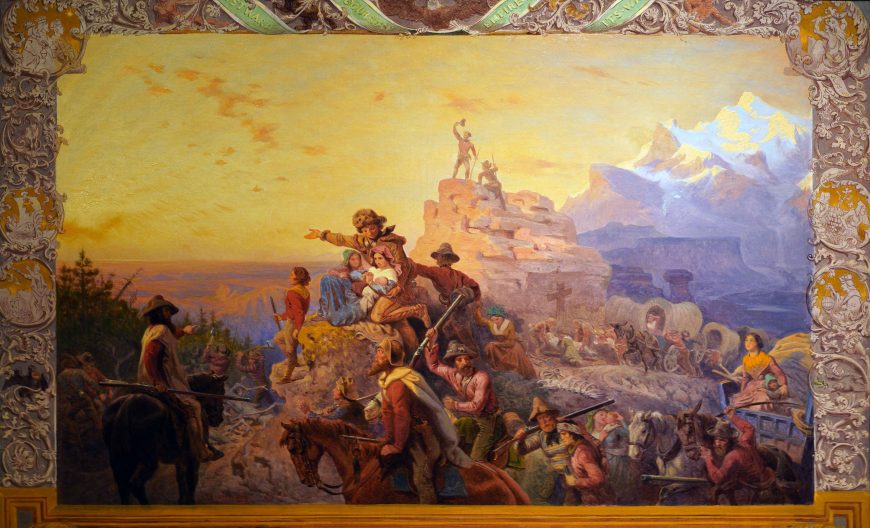
Emanuel Gottlieb Leutze, Westward the Course of Empire Takes Its Way (mural study for the United States Capitol), 1861, oil on canvas, 33-1/4 x 43-3/8 inches (Smithsonian American Art Museum)
Opportunity and ideology settled the West. In 1845, journalist John O’Sullivan coined the phrase “manifest destiny” to embody the spirit of the movement. The phrase implied an inevitable and even divinely-ordained process of Anglo-American culture replacing Native American culture, which was seen by many as less civilized. Yet the landscapes they viewed as wilderness had been the home of American Indian civilization for thousands of years. Tribal alliances became more complicated with American involvement. The Pawnee, for example, allied with the U.S. seeking protection from the neighboring Lakota, yet lost land and independence when removed to Indian Territory in what is now Oklahoma.
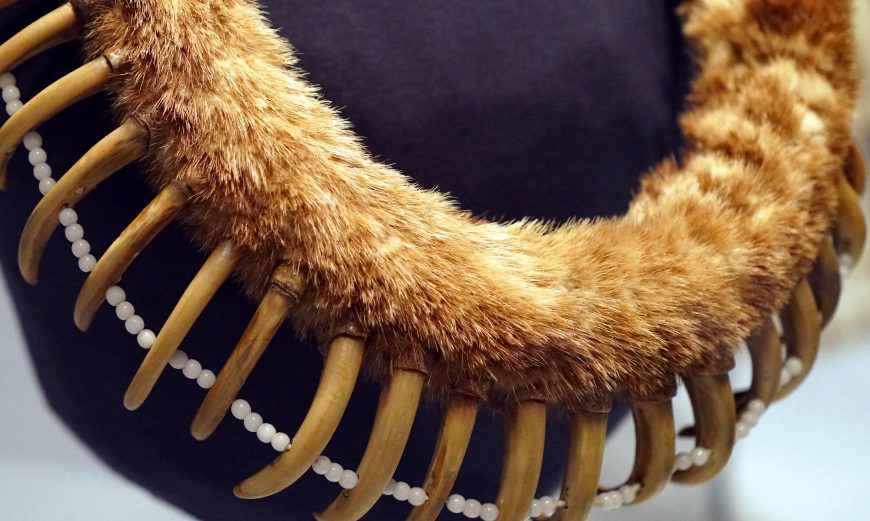
Bear Claw Necklace (Pawnee), before 1870, grizzly bear claws and hide, otter pelt, beads, cedar, tobacco and other materials (Denver Art Museum)
Many who saw the immense mountains and valleys of the West celebrated the landscape. In 1871 when geologist Ferdinand V. Hayden explored an area known as Yellowstone, he remarked that it should be preserved from settlement. In just a few decades, the impact of expansion was threatening nature’s nation. Following Fremont’s lead, government-sponsored scientific expeditions traversed the continent, making maps and identifying resources that could be exploited. But many also employed artists. The Hayden expedition took along both a photographer and an artist (William Henry Jackson and Thomas Moran respectively). The photographer Carlton Watkins, likely supported by the Oregon Steam Navigation Company, created images of the Columbia River that urged businessmen to invest and people to move and settle the region, while his photographs of the Yosemite Valley pushed Congress to preserve it as a national park.
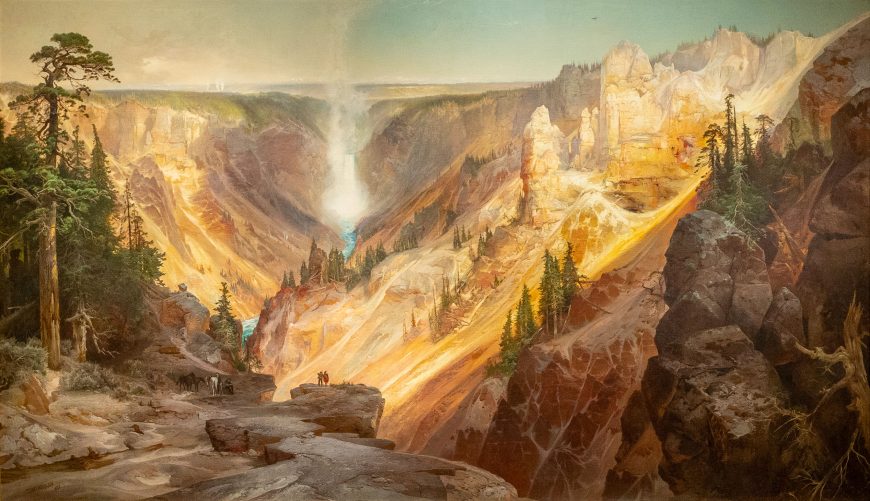
Thomas Moran, The Grand Canyon of the Yellowstone, 1872, oil on canvas mounted on aluminum, 213 x 266.3 cm (Smithsonian American Art Museum, Lent by the Department of the Interior Museum)
Civil War & Civil Rights
As new territories applied for statehood, the issue of slavery took center stage. The federal government embroiled itself in a series of compromises and failed to resolve the issue of slavery’s spread. The Kansas-Nebraska Act (1854) laid bare regional differences among political parties leading to their reorientation. The new anti-slavery Republican party successfully ran Abraham Lincoln for president in 1860.
Before President Lincoln even took office, southern states began to quit the Union and ultimately formed the Confederate States of America with its own constitution and president. Lincoln refused to recognize this claim of independence. When Confederates attacked an unarmed supply ship at Fort Sumter, war followed.
Bloody and deadly battles saw heart-wrenching casualties. A military draft was enacted on both sides. The South, who thought their cotton crops would earn them international support, found themselves unable to secure allies, especially after Lincoln explicitly made the war about slavery with the Emancipation Proclamation in 1862. Slavery was already illegal in most European countries. In addition, most railroad track and industry (as well as the ability to produce firearms and ammunition—not to mention food crops) were located in northern states. The Confederates found themselves without the resources needed to win the war. Cotton may have been king, but that raw material wasn’t enough to win the war.
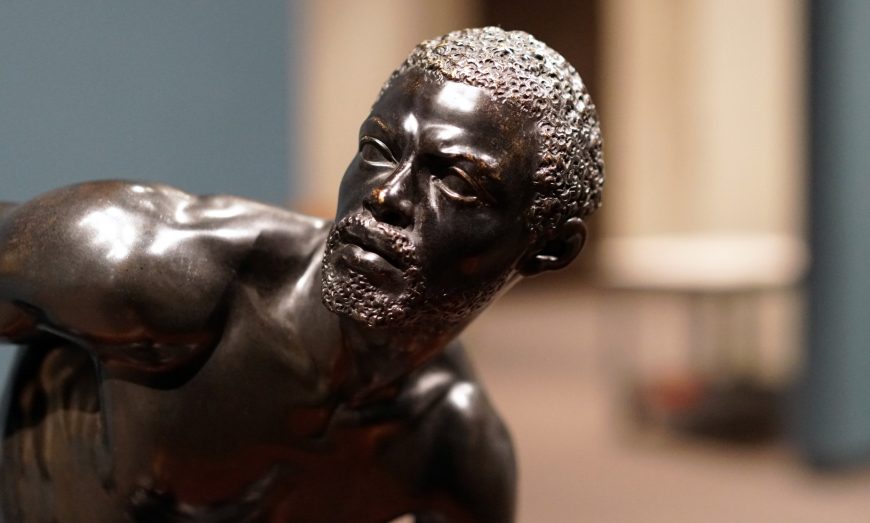
John Quincy Adams Ward, The Freedman, 1863, bronze (Amon Carter Museum of American Art, Fort Worth, Texas)
During the Civil War questions of how to integrate former slaves into American society remained. After the Civil War, Reconstruction placed federal troops throughout the South forcing state governments to assure black freedoms. The Freedmen’s Bureau helped African-Americans gain access to education and employment, though too often that meant sharecropping while the Civil Rights Act of 1875 and the 13th–15th amendments to the Constitution legally established rights.
Efforts at government control over race relations were undermined by deep-seated racism and were constantly challenged through intimidation and violence. The Ku Klux Klan was organized immediately after the war ended in order to ensure control over formerly enslaved people through violence and terror. When Reconstruction ended in 1877, southern states passed segregation laws establishing what is known as Jim Crow, a system that maintained the oppression of African-Americans for nearly one hundred years.
Conclusion
These middle decades of the nineteenth century saw drastic changes wrought by both compromise and conflict.
The Civil War ended the conversation and compromises of previous decades and, though it ultimately freed the enslaved, people’s minds and hearts did not change overnight. The process to true freedom was slow and incomplete.
The Civil War ended the conversations and compromises of previous decades and, though it ultimately freed the enslaved, people’s minds and hearts did not change overnight and prejudice, intimidation, and violence has continued ever since. African-American men earned the right to vote (at least in theory), but women had not. Industry had produced great wealth, but its impact on people’s lives and health was becoming a serious matter. Similarly, the effect of human activity upon the environment was increasingly visible as Americans simultaneously exploited and and preserved the land..
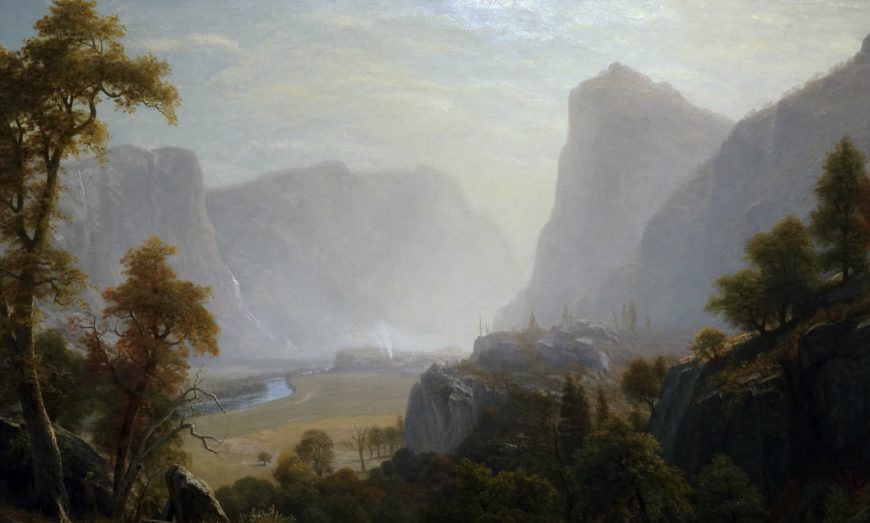
Albert Bierstadt, Hetch Hetchy Valley, California, c. 1874–80, oil on canvas, 94.8 x 148.2 cm (Bequest of Laura M. Lyman, in memory of her husband Theodore Lyman, Wadsworth Atheneum Museum of Art)
After John Fremont’s death, his wife Jessie wrote: “Railroads followed the lines of his journeyings—a nation followed his maps to their resting place—and cities have risen on the ashes of his lonely campfires.” Whether one saw this as a positive or negative was a matter of opinion that fueled national identity and one’s idea of progress through to the next century.
Additional resources:


